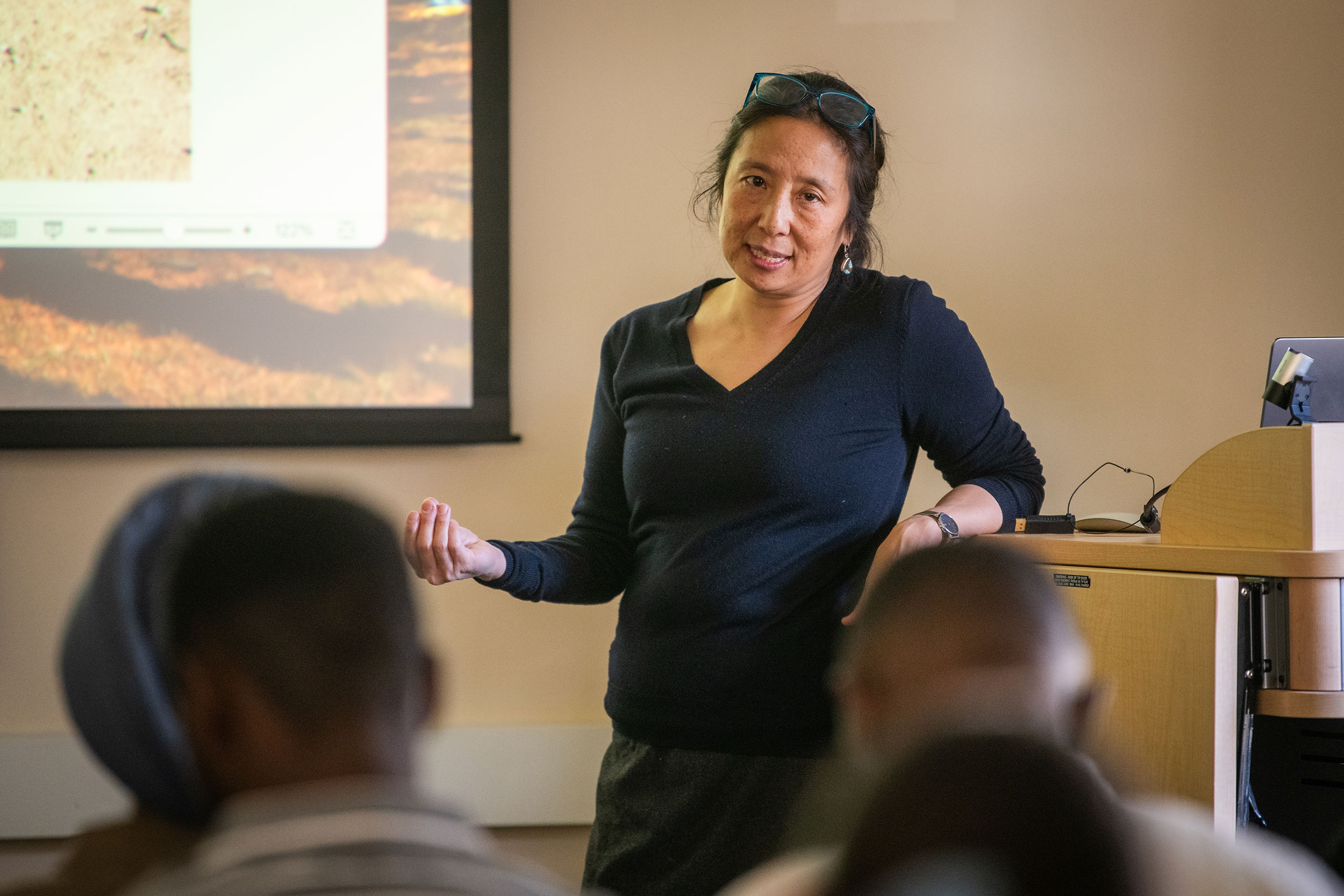What if every dark cloud had a silver iodide lining?

As climate change alters patterns of precipitation, governments and utility companies around the world are turning to the little-studied practice of cloud seeding to generate snow and rain, according to a geographer who spoke at Clark University this week.
“As I dug into this, I was surprised both by how common cloud seeding actually is, especially where I live in Colorado, and all across the American West,” said Emily Yeh, professor of geography at the University of Colorado-Boulder, in her March 19 lecture, “Global Geographies of Weather Modification in an Era of Climate Change,” in Dana Commons’ Higgins Lounge.
Yeh, who was invited to Clark as a Phi Beta Kappa visiting scholar, spent two days speaking to four undergraduate classes and to graduate students.
In her public lecture, she noted that the cloud seeding started in the 1940s when researchers at General Electric discovered “that seeding super-cooled clouds of water vapor in a lab with either dry ice or silver iodide could cause water droplets to freeze and then fall as snow, and this is because silver iodide, like dry ice, has a crystalline structure similar to that of ice.”
Another type of cloud seeding introduces “salt crystals into cumulus clouds, mostly in warm weather, to jumpstart and enhance collisions between small droplets and converting more of them into rainfall,” she added.
“Seeding can be done by aircraft — that’s very expensive — or from the ground by burning flares of silver iodide so that the updraft can bring them into clouds, or by shooting silver iodide with cannons and small rocket launchers,” Yeh explained.
Currently, nine western states have cloud seeding programs, and there is no regulatory framework governing such weather modification. Yeh provided a history and overview of cloud seeding in the U.S., the United Arab Emirates, and China, which has invested heavily in such weather-modification techniques. During a severe drought in summer 2022, China “engaged in an intensive and rather unprecedented cloud seeding effort” along the provinces of the Yangtze River, she said.
Cloud seeding has raised controversy, according to Yeh. Critics are concerned about the risks of silver iodide in the environment and about “cloud stealing,” in which practitioners — utility companies, states, or countries — are accused of diverting rain clouds from adjoining areas. Neither concern, however, has been supported by scientific research, according to Yeh.
But she pointed out that cloud seeding raises the possibility of broader acceptance of another, more controversial weather-modification technique: stratospheric aerosol injection. The technique of using aerosols to reflect sunlight into space is promoted as a way to stop global warming.
The issues raised by cloud seeding — the lack of a legal and regulatory framework; the geopolitical tensions that arise between countries; and injustices against those negatively affected — “deserve more research and deserve to be part of a much bigger part of the conversation as larger-scale or even regional-scale planetary modifications continue to be considered,” Yeh concluded.
Besides Phi Beta Kappa, Yeh’s visit was sponsored by the Office of the President, Graduate School of Geography, A new Earth conversation, the Department of Sustainability and Social Justice, the Asian Studies Program, and the George Perkins Marsh Institute.


